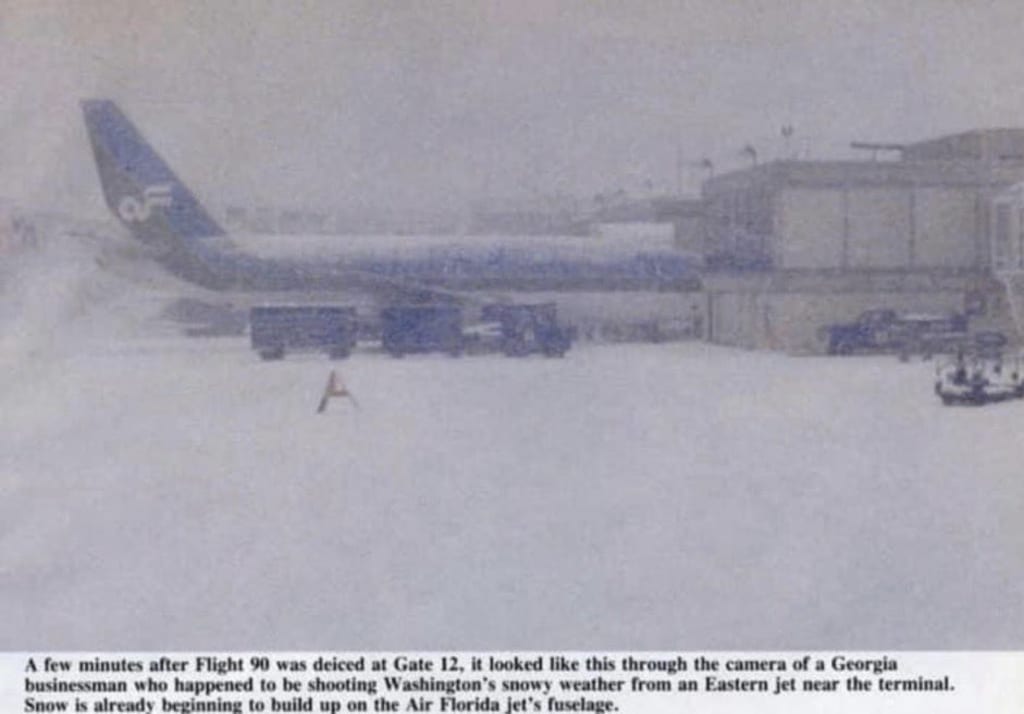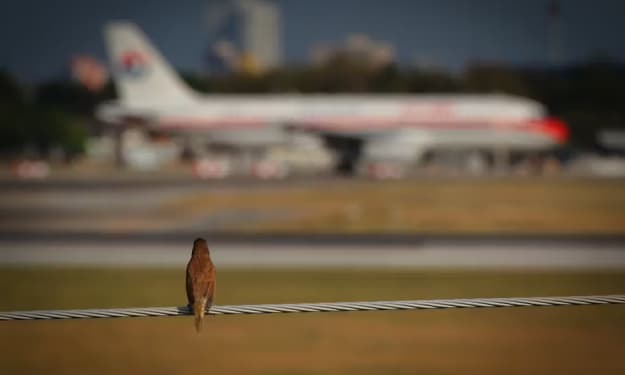Tragedy Over the Potomac: The Crash of Air Florida Flight 90
Tragedy Flight

On a cold January day in 1982, Air Florida Flight 90 took off from Washington National Airport, destined for Fort Lauderdale, Florida. However, what began as a routine flight quickly turned into a tragedy that claimed the lives of 78 people and left an indelible mark on aviation history. The crash of Flight 90 into the icy Potomac River serves as a sobering reminder of the critical importance of proper procedures and the relentless pursuit of safety in aviation.
The Flight and the Conditions
Air Florida Flight 90 was a Boeing 737-222, a widely used aircraft model known for its reliability and efficiency. On January 13, 1982, Washington, D.C. was gripped by a severe snowstorm, with heavy snow and freezing temperatures creating challenging conditions for aviation. The snowstorm had already caused significant delays and disruptions at Washington National Airport (now Ronald Reagan Washington National Airport).
Despite the adverse weather, Flight 90 was cleared for departure. The aircraft had been sitting on the tarmac for an extended period, accumulating ice and snow on its surfaces. De-icing procedures were conducted, but the effectiveness of these measures would later come into question. At 3:59 p.m., the aircraft began its takeoff roll on Runway 36.
The Takeoff and Immediate Trouble
As Flight 90 roared down the runway, it became apparent that something was amiss. The aircraft struggled to gain altitude immediately after liftoff, with the pilots battling to keep it airborne. Within seconds, the plane stalled, unable to maintain the necessary lift to stay aloft. The combination of ice on the wings and insufficient power resulted in the aircraft losing lift and plummeting towards the Potomac River.
At 4:01 p.m., just moments after takeoff, Flight 90 crashed into the 14th Street Bridge before plunging into the frigid waters of the Potomac River. The impact was devastating, with the plane breaking apart and sinking into the icy river. Seventy-eight of the 79 people on board, including passengers and crew, perished in the crash. Four motorists on the bridge also lost their lives as the wreckage struck their vehicles.
The Heroic Rescue Efforts
In the immediate aftermath of the crash, the scene on the Potomac River was one of chaos and despair. The freezing temperatures and strong currents made rescue efforts extremely challenging. However, the response from both professional rescuers and ordinary citizens was nothing short of heroic.
The U.S. Park Police helicopter, piloted by Donald Usher and Eugene Windsor, played a crucial role in the rescue efforts. They hovered over the crash site, dropping lifelines to the survivors clinging to the wreckage. One of the most memorable and heroic figures was a passenger named Arland D. Williams Jr., who repeatedly passed the lifeline to other survivors before succumbing to the icy waters himself. His selfless actions saved the lives of others and left an enduring legacy of courage and sacrifice.
Another hero of the day was Lenny Skutnik, a government employee who, upon seeing a survivor struggling in the water, dove into the icy river to rescue her. Skutnik’s bravery was recognized and honored by President Ronald Reagan during the State of the Union Address later that month.
The Investigation and Findings
The investigation into the crash of Flight 90 was conducted by the National Transportation Safety Board (NTSB). The findings revealed a series of critical errors and oversights that contributed to the tragedy. One of the primary factors was the inadequate de-icing of the aircraft. Despite having undergone de-icing procedures, the plane still had significant ice and snow on its wings, which severely impacted its ability to generate lift.
Additionally, the investigation uncovered that the flight crew had failed to activate the engine anti-ice system, which is designed to prevent ice from forming on engine components. The NTSB also noted that the crew's decision-making was impaired by their lack of experience in operating in such severe winter conditions.
The report highlighted the need for more rigorous de-icing procedures, better training for flight crews in winter operations, and improved communication and coordination between ground and flight crews. The findings led to significant changes in aviation safety regulations and procedures to prevent similar tragedies in the future.
Legacy and Lessons Learned
The crash of Air Florida Flight 90 had a profound impact on the aviation industry. It underscored the importance of strict adherence to safety protocols, especially in adverse weather conditions. The tragedy prompted changes in de-icing procedures, improved training for pilots and ground crews, and the development of more advanced technologies to detect and prevent ice accumulation on aircraft.
The heroism displayed during the rescue efforts also left an enduring legacy. The bravery of individuals like Arland D. Williams Jr. and Lenny Skutnik serves as a reminder of the capacity for human courage and selflessness in the face of disaster. Their actions are commemorated through awards and memorials, ensuring that their sacrifices are never forgotten.
Conclusion
The crash of Air Florida Flight 90 is a tragic chapter in aviation history that serves as a stark reminder of the critical importance of safety in air travel. While the loss of 78 lives is a solemn testament to the consequences of oversight and error, the changes implemented in the aftermath have undoubtedly made aviation safer for future generations. The legacy of the victims and heroes of that fateful day continues to inspire and guide efforts to ensure that such a tragedy is never repeated.
About the Creator
Enjoyed the story? Support the Creator.
Subscribe for free to receive all their stories in your feed. You could also pledge your support or give them a one-off tip, letting them know you appreciate their work.






Comments
There are no comments for this story
Be the first to respond and start the conversation.